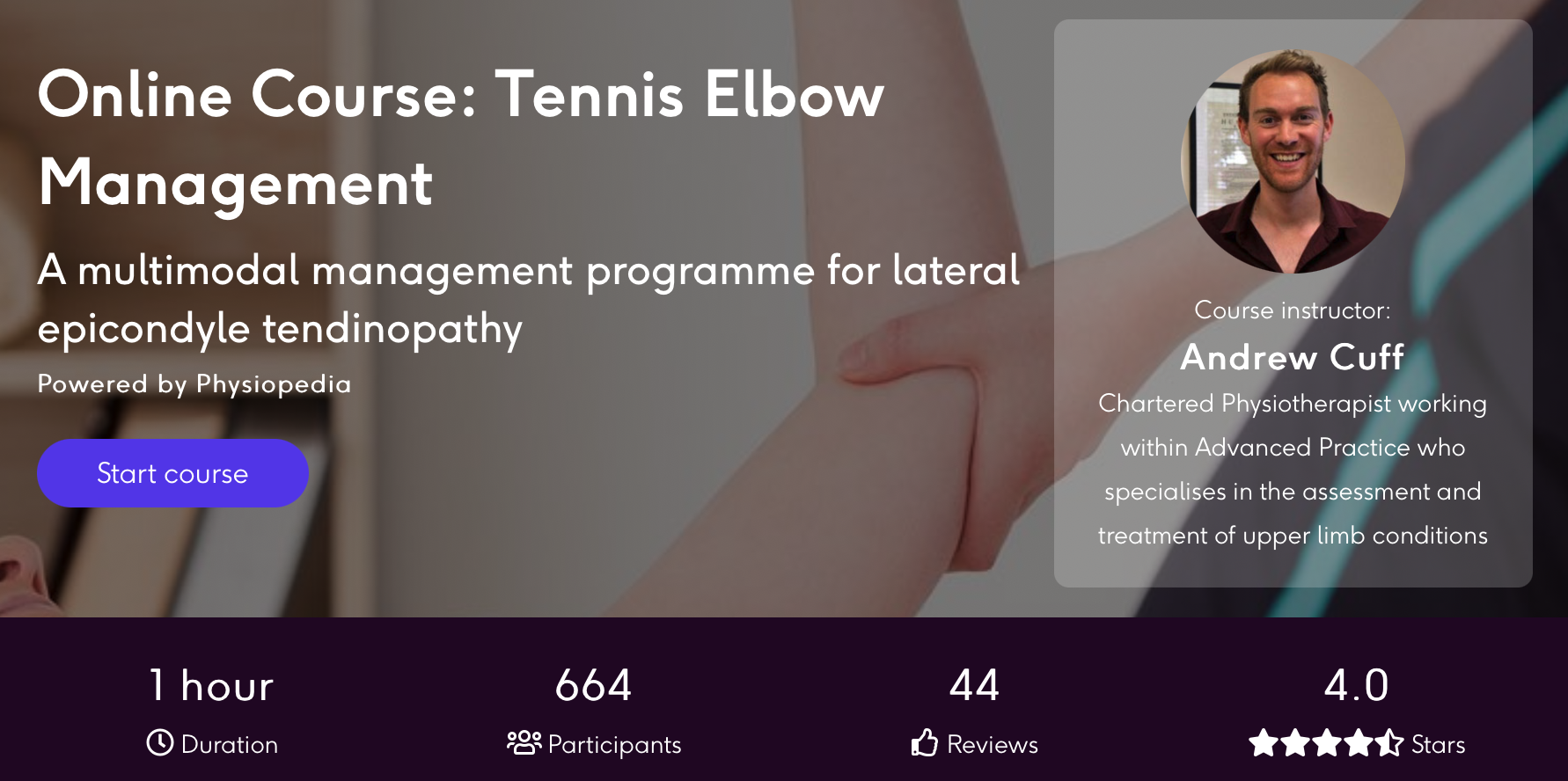There’s rising controversy surrounding some new remedies for tennis elbow however what does the proof inform us?
Round 3% of the inhabitants will endure from tennis elbow sooner or later of their life however regardless of this excessive quantity the optimum therapy stays controversial. Proof stays inconclusive about which therapy is finest nonetheless it’s extensively accepted that non-operative therapy is the most effective first-line choice.
Tennis Elbow Remedy with Andrew Cuff
Non-operative therapy contains physiotherapy, corticosteroid injections, platelet-rich llama and autologous blood however there’s a lack of proof evaluating the prevalence of 1 over the opposite. Latest proof is inconsistent and infrequently contradicts findings from different research clouding scientific resolution making.
To attempt to shed some readability on the state of affairs a current systematic assessment with meta-analysis was revealed in JES Worldwide with the intention of evaluating the practical and ache outcomes of physiotherapy, corticosteroid injections, Platelet-rich plama and autologous blood with no lively therapy or placebo management.
Strategies
The protocol of this systematic assessment with meta-analysis was pre-published on PROSPERO and adhered to the PRISMA-P steerage. The authors developed their search technique by means of an interactive course of with enter from specialists. They selected to make use of three completely different distinctive searches for the three remedies the assessment was focussed on physiotherapy therapy, CSI and PRP/AB.
Seven databases had been for the search which came about in March 2021 utilizing a mixture of key phrases together with lateral epicondylitis and randomised managed trial and physiotherapy. The search was restricted to non-human research revealed in English language solely with no date restriction on publication.The full search methods is out there as a phrase doc.
To be eligible for inclusion articles had be meet the next standards:
- use a randomised managed trial strategy utilizing a comparability of no lively therapy or placebo
- contain sufferers who had been between 18 and 75 years of age with confirmed lateral epicondylitis
- be adopted up for no less than six months and used ache and practical outcomes as the result measures
- If physiotherapy therapy was used this have to be outlined as strengthening and stretching with handbook remedy or electrotherapy being excluded
- Corticosteroid injections, platelet-rich plasma and autologous blood injections needed to adhere to protocols outlined within the article which is out there in full
Article screening was carried out by by two reviewers in a two-stage strategy working independently of one another. Disagreements had been resolved by consensus and knowledge extraction was carried out utilizing Microsoft Excel with statistical evaluation carried out utilizing RevMan. Danger of bias was assessed utilizing the Cochrane Danger of Bias Software for RCTs with GRADE utilizing to judge high quality of included research.
Outcomes
In whole seventeen trials had been included inside this assessment with pattern sizes starting from 18 to 132 with imply age of contributors being 48 with a spread of 43-62. The commonest comply with up period was 12 months.
5 research (n= 447) in contrast physiotherapy therapy which concerned strengthening to a management which demonstrated no completely different in ache (0.07, 95% confidence interval [CI]: 0.56 to 0.41) or perform (0.08, 95% CI: 0.46 to 0.30) at 12 months. A subgroup evaluation confirmed comparable outcomes for stretching remedies though this was simpler than strengthening however nonetheless under significance.
The research associated to physiotherapy interventions had been assessed to have critical threat of bias with low-moderate certainty of proof. It’s unclear which therapy protocols had been utilized in the entire research with potential lack of consistency in adherence to remedies. It is usually potential that single therapy approaches to treating tennis elbow is ineffective and mixed strategy is efficient.
Seven research investigated using corticosteroid injection which totalled 416 sufferers with a imply age of fifty years. For each ache (imply distinction: 0.70, 95% CI: 0.22 to 1.18) and performance SMD: 0.35, 95% CI: 0.54 to 0.16) the management group was discovered to be simpler at 12 months. Included research has excessive threat of bias and a low-moderate certainty of proof.
Two research in contrast platelet-rich plasma with controls (n= 64) with no distinction was noticed in ache or perform. This was the identical for the three research evaluating autologous blood (n= 134). Each teams of research has low threat of bias and excessive certainty of proof.
Abstract
The findings of this systematic assessment are in step with current comparable critiques by Kim et al with the one main distinction being Kim et al had a broader vary of physiotherapy remedies included inside their assessment and confirmed a major enchancment in ache outcomes over an identical timeframe. It is usually potential {that a} multimodal strategy to therapy is the simplest to managing tennis elbow which might not have been demonstrated on this systematic assessment.
A current assessment by Houck et al confirmed that each PRP and AB are efficient remedies for tennis elbow within the first 12 weeks of therapy solely which is supported by this assessment as each had been ineffective at 6 and 12 months.


